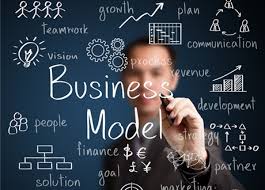Everyday, I have conversations with a wide variety of people, whether senior corporate executives, sales/marketing leaders, sales enablement/sales ops, front line sales managers, sellers, marketers. While the conversations are different, there is an underlying theme common to them all.
“Our business models are breaking, they are no longer working the way they used to work……”
These folks may not recognize it, up front, but eventually we get to this discovery.
Virtually everything that used to work, no longer seems to be working—or it’s not delivering the results expected.
Prospecting is broken, even very good prospecting outreaches are no longer as impactful as in the past. Great prospecting outreaches are getting lost in the sheer volume of outreach that so many others are doing–virtually every channel, email, social, phone, text, is no longer working very well. However much we tune our prospecting, refine our sequences, focus our targets, the reality is stark.
When we find opportunities, we struggle to engage customers. They are minimizing the time they spend with us, choosing to learn from other sources. So we are spending less time with each customer, struggling to maximize our impact with the time they allow us to spend.
Our training programs, our tools, our sales/marketing programs are no longer as impactful as they used to be. I get into conversations, “insight isn’t s effective as it was, how do we move beyond insight….” “solution selling isn’t having the impact we thought…” It goes on, and on.
“We struggle more in developing high quality pipeline….. Our win rates, our average deal size are decreasing, our sales cycles are increasing,…..The percent of people achieving goal is declining and to make up for it we have to hire more people, spending much more money…..”
It’s not just sellers, marketing/sales/customer experience that is struggling. Buyers are struggling, more buying efforts end in no decision made. For those decisions they make buyer regret is increasing.
And on top of all of this, there are external factors that aggravate these challenges. The global economy, shifts in global business/trade, social change, global politics/conflict, changing views on work, all contribute to the challenges we, individually and organizationally, face.
All of this can be a little depressing. We struggle, doing what we can, we double down on what has worked, trying to make them work–to some degree. We keep doing more, sometimes we try do better.
But, at least to me, we are at a turning point, it’s one of the most profound and exciting that I’ve experienced. The breakdown of our current business models drives a huge forcing function to change!
Not changing is not an option. If we remain committed to that which is no longer working, we fail.
It’s at times like we currently face, we see the greatest innovation. We are forced to rethink everything we do. We are mandated to find new business models, different ways of engaging our people and our customers.
As we look back into history, we’ve seen periods of great innovation resulting from some of our most difficult times. One of the great opportunities we have is that we aren’t in this alone. Every organization, our customers, our suppliers, our markets, our communities face similar things. And since we aren’t alone, we have the opportunity to collaborate in new and different ways. We have the opportunity to work together in defining new models and approaches to grow and succeed.
The conversations I’ve had with clients and prospects have changed profoundly over the last year. They are less dominated by how to do more or how to do it better. Instead they are asking, “What should we be doing differently? How do we reinvent ourselves?”
And what’s interesting in these conversations is their customers and suppliers are asking them the same questions. Which gives us the opportunity to collaborate in ways we probably haven’t done before. It gives us the opportunity to create value with each other, for each other, in ways we don’t often experience.
And all we have to do is work with a small number of customers, partners, suppliers to experiment and discover these new approaches. Once we discover these, get some experience in gaining success, then we start scaling these approaches within our markets and customers, doing more……
As we end this year, there’s the rush to close as much business possible. There’s also the pressure for kicking off the New Year, SKOs, and so forth. But take the time to reflect and think, how do we move from doing more, doing better to innovating and doing different?

Leave a Reply